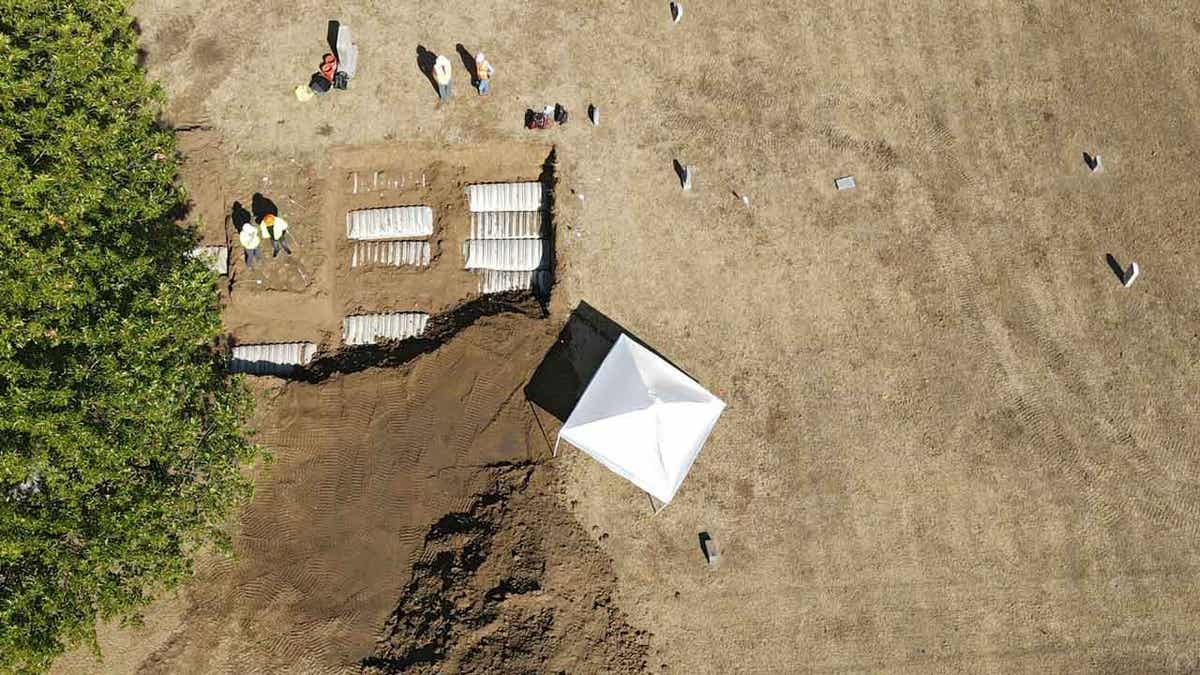Fox News Flash top headlines for November 2
Fox News Flash top headlines are here. Check out what's clicking on Foxnews.com.
The search for remains of victims of the 1921 Tulsa Race Massacre has turned up 21 additional graves in the city’s Oaklawn Cemetery, officials said.
Seventeen adult-size graves were located Friday and Saturday, Oklahoma State Archaeologist Kary Stackelbeck said Monday. Additionally, the city announced Tuesday that four graves, two adult-size and two child-size, had been found.
The coffins, then the remains, will be examined to see if they match reports from 1921 that the victims were males buried in plain caskets.
"This is going to part of our process of discriminating which ones we're going to proceed with in terms of exhuming those individuals and which ones we're actually going to leave in place," Stackelbeck said in a video statement.
TULSA MASSACRE VICTIM POTENTIAL DESCENDANTS CAN CONFIRM USING DNA
The work, by hand, was still underway, and the types of coffins and gender of the victims have not been determined, according to the city's statement.
The remains will be reburied, at least temporarily, at Oaklawn, where a previous reburial was closed to the public, drawing protests from about two dozen people who said they are descendants of massacre victims and should have been allowed to attend.
A violent white mob targeted Black people during the massacre, in which more than 1,000 homes were burned, hundreds were looted, and a thriving business district known as Black Wall Street was destroyed. Historians have estimated the death toll at 75 to 300.

Crews search for bodies from the 1921 Tulsa Race Massacre at the Oaklawn Cemetery in Tulsa, Oklahoma, on Oct. 27, 2022. A team of scientists started the process of re-exhuming human remains Wednesday in their effort to identify victims killed in the massacre. (Mike Simons/Tulsa World via AP)
TULSA MASSACRE DOCUMENTARIES OFFER DEEP DIVE INTO TRAGEDY
A search for the graves of massacre victims began in 2020 and resumed last year with nearly three dozen coffins recovered.
Fourteen sets of remains were sent for testing, and two had enough DNA to begin sequencing and start developing a genealogy profile.
The current search includes reexhuming the other 12 remains in an effort to collect more usable DNA in an effort to eventually identify them.
CLICK HERE TO GET THE FOX NEWS APP
The massacre wiped out generational wealth, and victims were never compensated, but a pending lawsuit seeks reparations for the three remaining known survivors. They are now more than 100 years old.





















